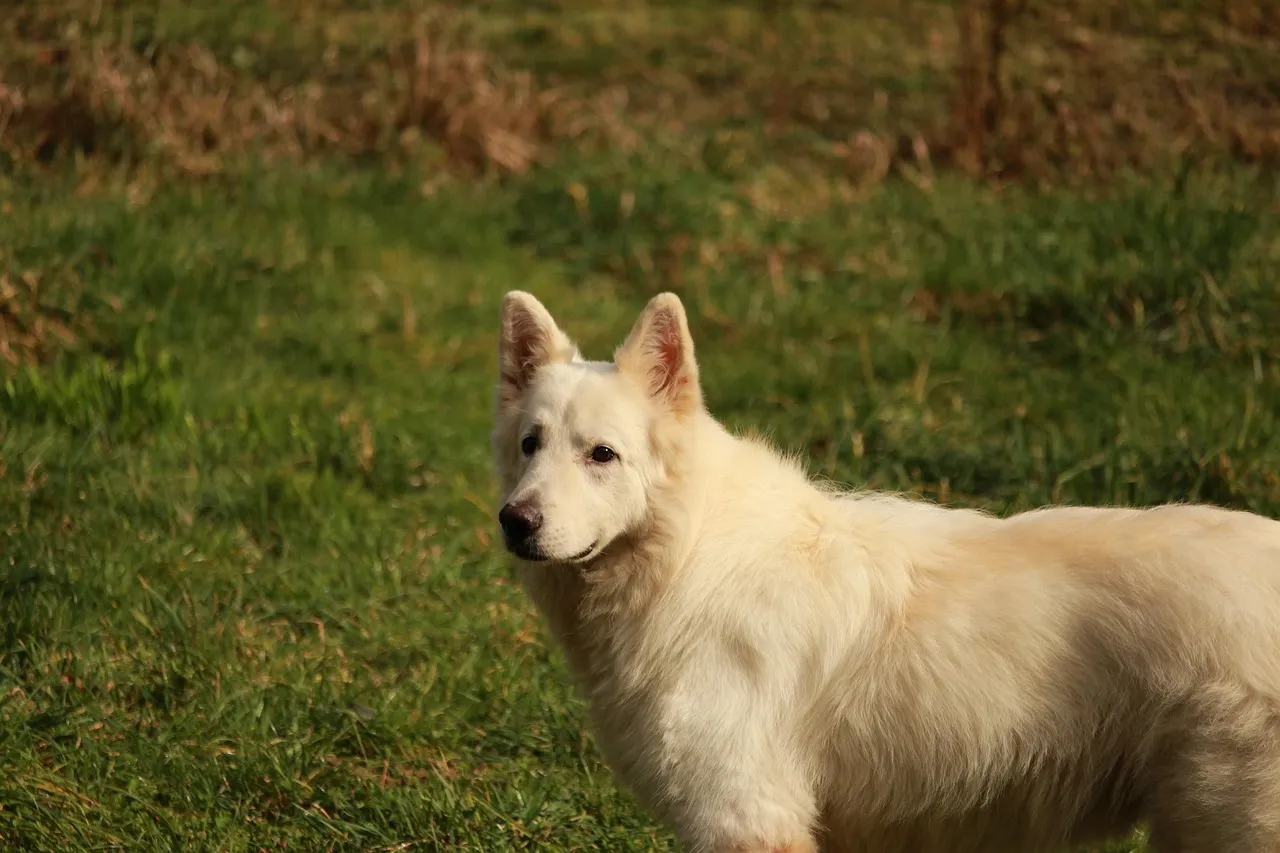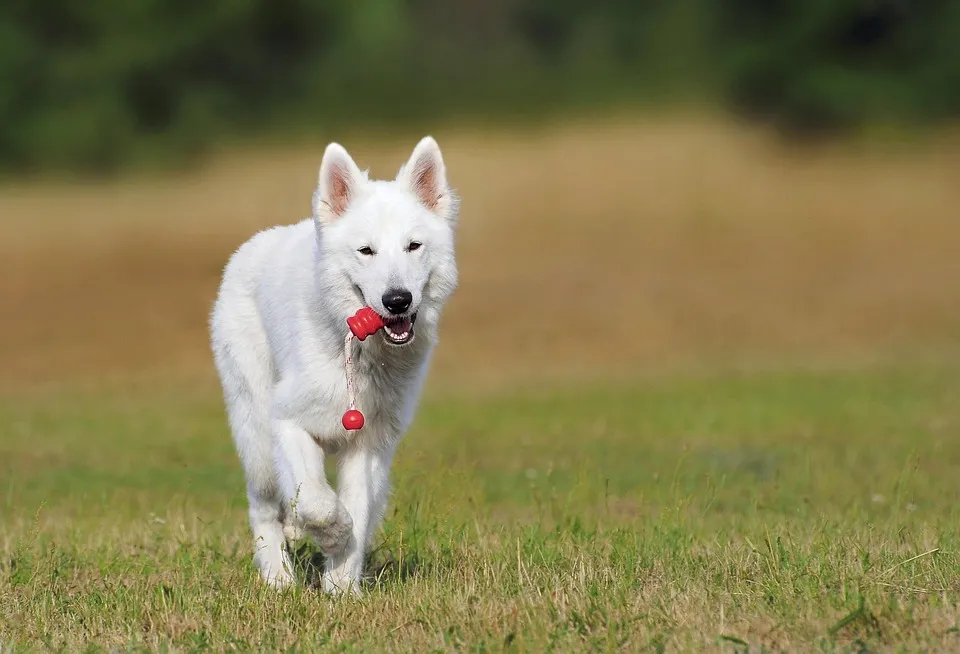The Swiss German Shepherd is an “important, well-muscled, medium-sized” breed with standing, pointed ears. Their fleece is a “double fleece, which is either of medium length or long,” and is always, with dark skin. They have an “elegant, harmonious figure.” Their eyes range from light to dark brown and are almond-shaped. Swiss German Shepherds are lively and alert tykes analogous to their German Shepherd forebears. They’re friendlier with nonnatives than German Shepherds tend to be. They’re veritably intelligent and adaptable, easy to train, and pious breeds.
This Multicolored German Shepherds were formerly banned from enrollment in their native Germany, but in the United States and Canada, the achromatic gained a following, and a strain club was formed specifically for multicolored German Shepherds, calling their variety the Shepherd. The first super stud breeds of what became the Swiss German Shepherd Dog was an American breed born in 1966 that was imported to Switzerland. The variety was provisionally accepted as a strain by the FCI in 2002 and entered full acceptance in 2011. The Kennel Club of the United Kingdom officially honored it in 2017.
Personality of the Swiss German Shepherd
Analogous to their ancestors, the German Shepherd, the Swiss German Shepherd is a lively, alert, and intelligent breed. They’re inclined to be friendlier to nonnatives than their German Shepherd cousins, but else should be considered a clever, quick-thinking working type. They bond well with possessors and can be a commodity of a ‘one-person breed,’ particularly if one family member spends more time with them and does more feeding and training. They’re smart enough to fete the most precious person in the home!

Exercise Conditions of the Swiss German Shepherd
Two hours per day, with redundant training time and internal exercise, will keep the Swiss German Shepherd happy and content. These Youthful breeds should be exercised precisely, avoiding stairs, steep hills and inordinate wringing, turning, and jumping to avoid damage to still forming joints.
Adult Swiss Germans will profit from a physical job, as their ancestors worked as beasts, although not driving in the way a Border Collie might, gathering creatures into a group, and moving the group. Rather, their part was as a living hedge, pacing out an unnoticeable boundary continuously to help lambs from crossing that boundary and therefore keeping them on the land they were meant to be grazing. This job needed plenty of stamina, as where other beast guardians would stand and watch, the Shepherd would be constantly on the move.
Grooming of Swiss German Shepherd
The Swiss German Shepherd doesn’t require professional grooming; a good comb through once a week for the medium fleece and maybe twice a week for the long fleece. They do, still, exfoliate inconceivable quantities of fur, so much so that hard bottoms and diurnal vacuuming will be necessary! Check paw pads and branches after exercise for any scrapes, scratches, or debris.
Training of Swiss German Shepherd
Slow to mature and more sensitive than their tough, occasionally assessing appearance suggests, the Swiss German requires harmonious training and sensitive, thoughtful running. Beforehand, socialization is important to get them used to family, children, favorites, and beasts. Pay particular attention to tutoring a solid and dependable recall, as this will be necessary to allow them safe off-leash time. Positive underpinning works best with this strain; aversive styles will produce a confused and unhappy breed.

Did You Know?
1. This is a fairly new strain, only being honored by the FCI since the mid-1990s.
2. There have been several celebrity possessors of Swiss German Shepherds, including Tom Hanks’s Monty, Jennifer Aniston’s Dolly,’ Billy Ray Cyrus’s ‘Mate,’ and, of course, fantasy pen Neil Gaiman’s ‘Cabal’ and ‘Lola.’
Frequently Asked Questions
1. What’s a Swiss German Shepherd?
The Swiss German Shepherd is a variation of the traditional German Shepherd, frequently known for its plush fleece and calm, family-acquainted disposition. It’s nearly related to the Shepherd and is honored in some regions as a separate line.
2. Are Swiss German Shepherds purebred?
Yes, they are considered purebred in certain kennel clubs, especially when registered as Shepherds. They appear from German Shepherd lines widely bred for specific traits, such as fleeces and gentler grains.
3. How big do Swiss German Shepherds get?
Males generally weigh 75-95 pounds and stand about 24-26 inches tall. Ladies are slightly lower, comprising 60–80 pounds and 22-24 inches in height.
4. Do Swiss German Shepherds exfoliate a lot?
Yes, they exfoliate heavily time-round and especially during seasonal changes. Regular brushing (2-3 times a week) helps manage slipping.
5. Are Swiss German Shepherds good family types?
Absolutely! These breeds known for their pious, gentle, and defensive nature, making them excellent with children and other pets when duly mingled.
6. Are they easy to train?
Yes, like their German Shepherd relatives, Swiss German Shepherds are largely intelligent and eager to please, which makes them fairly easy to train with harmonious, positive underpinnings.
7. How much exercise do they need?
They need about 1.5 to 2 hours of daily exercise, including walks, playtime, and internal stimulation. Without enough exertion, they can become wearied or anxious.
8. Do Swiss German Shepherds have health issues?
Common health enterprises include hip dysplasia, elbow dysplasia, bloat, and degenerative myelopathy. Regular warhorse checks and a healthy life can help with some issues.
9. Are Swiss German Shepherds good with other breeds?
Yes, when mingled beforehand, they generally get on well with other tykes. Beforehand exposure to different faces and surroundings helps ensure balanced gestures.
10. How long do Swiss German Shepherds live?
They have an average lifetime of 10-14 years, depending on their genetics, diet, and overall health care.













